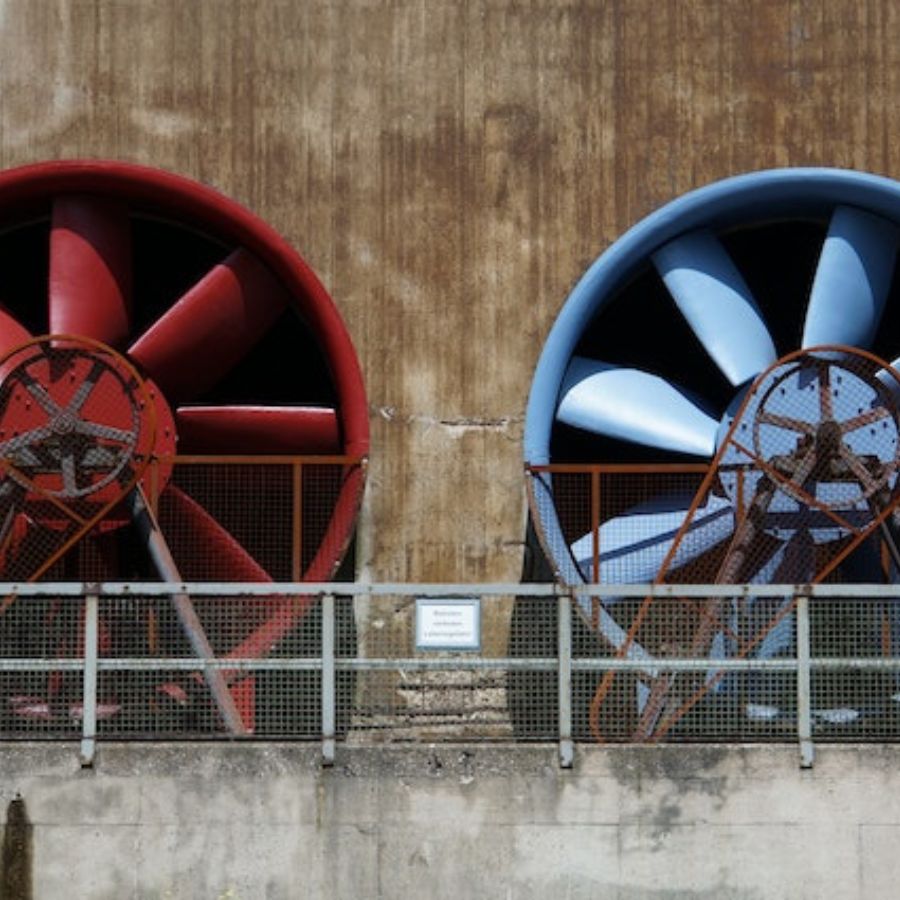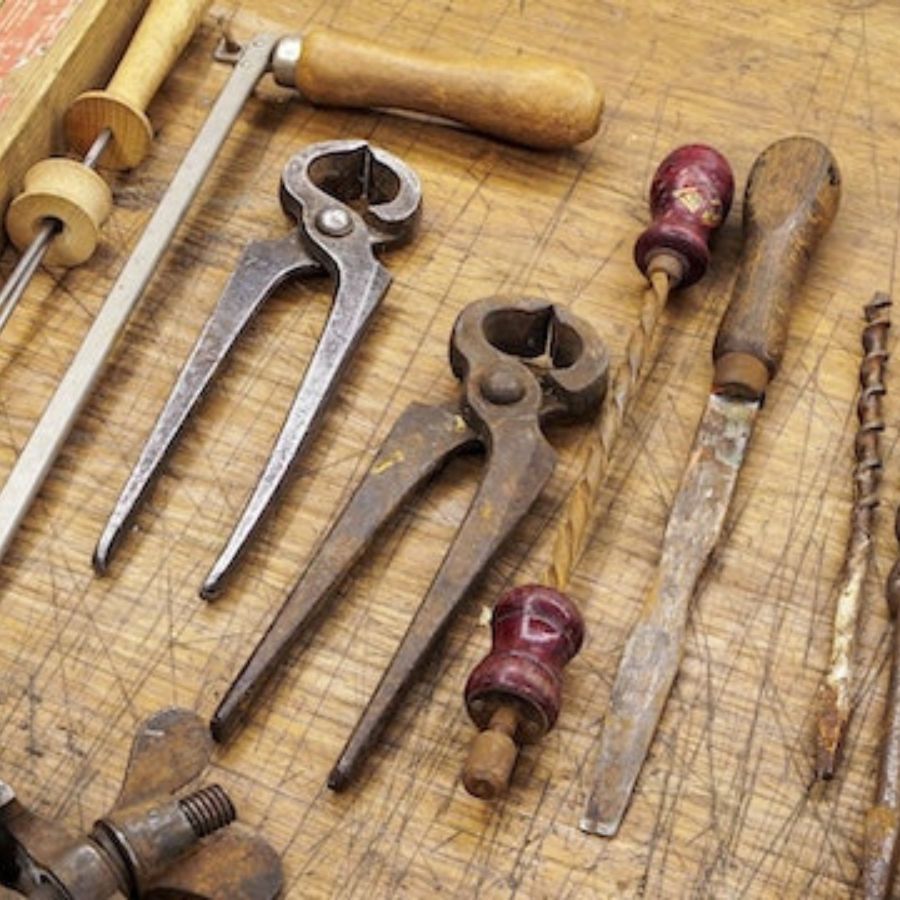How to Keep Tools From Rusting in a Shed

A well-organized shed is a haven for any DIY enthusiast or gardener. However, storing tools in a shed can expose them to moisture and humidity, leading to rust formation. Rust not only damages tools but also reduces their effectiveness. It is crucial to take preventive measures against rust to maintain the longevity and functionality of your tools. This article will explore practical tips and techniques to keep your devices from rusting in a shed, ensuring they remain in optimal condition for years.
Clean and Dry Your Tools

Properly cleaning and drying your tools is essential for preventing rust formation. It helps with power, metal, garden, rusty, or hand tools. As the National Institute of Standards and Technology describes, one significant part of preventing your tools from rusting in a shed is understanding the concept of corrosion control. Follow these steps to keep your tools rust-free and in optimal condition:
Remove Rust
Inspect your tools for any signs of rust. Gently scrub the rust using a wire brush or steel wool to prevent further corrosion. This step is crucial in maintaining your tools’ longevity. To add a protective layer, consider applying a rust-resistant spray or coating. For power tools, ensure they are separated from other tools during storage to prevent contact and potential damage. Optimize your storage space by keeping tools in a dry area away from moisture. Consider using vapor corrosion inhibitors (VCIs) to protect your tools stored in enclosed spaces, as VCIs create a protective barrier against rust formation.
Wash with Warm, Soapy Water
Once you get rid of the rust from your tools, washing them with warm soapy water is essential. Use a mild detergent and a brush to thoroughly clean away any dirt, debris, or grime that may have accumulated. Pay close attention to crevices and hard-to-reach areas where buildup is common.
Remember to keep power tools separated from other tools during storage to prevent potential damage. Additionally, control moisture in your tool shed by ensuring proper air ventilation. Consider utilizing a vapor corrosion inhibitor (VCI) to provide extra protection against rust formation.
Thoroughly Dry
After cleaning your metal, garden, or hand tools, it’s essential to ensure they are dry before storing them. Moisture is critical in rust formation, so eliminating it is crucial. Use a clean towel to wipe away any remaining water, or allow your tools to air dry in a well-ventilated area. Proper air circulation, facilitated by air vents or an open shed door, can aid in the drying process. Before storing, double-check that no residual moisture remains on the tools. This simple step will help protect your tools from rust and preserve their condition for future use.
Store Tools Properly
Proper storage is vital for preventing rust on your tools. Store them in a dry area, away from excessive humidity or moisture. To better protect your tools from moisture and rust, consider learning how to waterproof your shed’s plywood. Avoid storing them directly on the floor, as they can transfer water to the tools. Utilize shelves, tool racks, or pegboards to keep your tools organized and off the ground. Consider placing silica gel packs inside your toolboxes to absorb moisture for additional protection.
By following these steps and storing your tools properly, you can significantly reduce the risk of rust formation and extend the lifespan of your valuable tools. Regular maintenance and care will ensure that your tools are always ready for use whenever you need them.
Apply a Protective Coating
Consider applying a protective coating to your tools to protect against rust. There are various options available, including:
Rust-Resistant Spray
Use rust-resistant sprays specially formulated to protect your tools from rusting. These sprays create a thin barrier that shields the surface of your tools from moisture, effectively reducing the likelihood of rust formation. Applying a rust-resistant spray can be particularly beneficial when dealing with rusty tools. The protective layer created by the spray acts as a barrier, preventing moisture from reaching the metal and causing further corrosion. By incorporating this simple step into your tool maintenance routine, you can safeguard your tools and prolong their lifespan by keeping rust at bay.
Oil Coating
Applying a thin layer of oil is another effective method to prevent your tools from rusting. Use a rag or brush to evenly distribute rust-preventive oil, such as linseed or mineral oil, onto the surfaces of your tools. The oil creates a protective barrier that shields the tools from moisture and humidity, reducing the risk of rust formation. Applying oil coating to your tools is a simple yet effective way to maintain their condition and prevent rust. This protective measure helps prolong your tools’ lifespan and ensures they remain in optimal working order for years.
Beeswax
For rust prevention, beeswax serves as a natural alternative that works wonders. Melt the beeswax and apply a thin, even coat to the metal surfaces of your tools. As the wax solidifies, it forms a protective seal that protects against moisture, effectively preventing rust from forming on your tools. Using beeswax to protect your tools from rusting is sustainable and effective. This natural solution helps maintain the longevity of your tools, ensuring they remain rust-free and in optimal condition for their intended use. You can enjoy long-lasting, rust-free tools by incorporating beeswax into your maintenance routine.
Control Humidity in the Shed
Humidity is a significant contributor to rust formation. It is essential to control the humidity levels within your shed to keep your tools rust-free. Avoid water ingress, which could lead to rust, by understanding what to put around the bottom of your shed to keep water out. Here’s how:
Ventilation
Proper ventilation in your shed is crucial to prevent your tools from rusting. Adequate airflow reduces humidity levels by allowing moisture to escape instead of condensing on your tools.
Ensure that your shed has sufficient air vents or windows to promote ventilation. It helps to create a dry environment, minimizing the risk of rust formation. You can protect your tools from rusting and maintain longevity by prioritizing ventilation. Remember, a well-ventilated shed is vital to preserving the quality and functionality of your tools for years to come.
Dehumidifiers
Consider utilizing a dehumidifier to combat moisture and prevent rust in your shed. These devices help to regulate moisture levels by removing excess humidity from the air.
By reducing the moisture in the environment, dehumidifiers help create a drier atmosphere that is less conducive to rust. It is particularly beneficial in areas with high humidity or during wet seasons. Incorporating a dehumidifier in your shed maintenance routine can significantly reduce the likelihood of rust forming on your tools. It ensures they remain in optimal condition and extends their lifespan.
Silica Gel Packs
Consider placing silica gel packs near your stored items to maintain a dry environment in your shed and prevent rust from forming on your tools. Silica gel is a desiccant that effectively absorbs moisture from the air, helping to create a drier environment.
By strategically positioning silica gel packs near your tools, you can minimize the humidity levels in the shed, reducing the risk of rust formation. These small but powerful moisture absorbers are readily available and provide additional protection for your tools. Incorporating silica gel packs in your shed storage helps to ensure your tools remain rust-free and in optimal condition.
Proper Tool Storage

How you store your tools can significantly impact their susceptibility to rust. Follow these storage tips:
Shelving
Investing in sturdy shelves for your shed is a smart move to protect your tools from rust. Keeping your tools off the ground and elevated on stands prevents moisture from transferring from the floor onto your tools. Water on the ground can seep into the metal surfaces of your tools, increasing the risk of rust formation. Utilizing shelves creates a barrier, keeping your tools dry and reducing the chances of corrosion. This simple storage solution helps maintain the integrity of your tools, ensuring they remain rust-free and ready for use whenever you need them.
Tool Racks
To prevent rust formation and maintain the condition of your tools, consider using tool racks or pegboards for storage. Hanging your tools on these racks keeps them organized and facilitates better air circulation, reducing moisture buildup. When tools hang on racks or pegboards, they are exposed to airflow from all sides, allowing any trapped moisture to dissipate. This airflow helps prevent water accumulation that can lead to rust. Utilizing tool racks can optimize storage space, keep your tools easily accessible, and promote proper airflow, ensuring your tools remain rust-free and in optimal working condition.
Silica Gel Packs in Toolboxes
For those who store their tools in toolboxes, an effective method to prevent rust is to place silica gel packs inside. These packs act as moisture absorbers, reducing the humidity levels within the toolbox and minimizing the risk of rust formation.
Adding silica gel packs to your toolboxes creates a drier environment that helps preserve your tools’ integrity. These packs are readily available and easily placed inside the toolbox compartments. Implementing this simple step provides additional protection, ensuring your tools remain rust-free and ready for use whenever you need them.
Conclusion
Keeping your tools rust-free in a shed requires proactive measures to combat moisture and humidity. Regular cleaning, applying protective coatings, controlling humidity levels, and implementing proper storage practices can significantly extend the lifespan of your tools. Insulating your shed properly, as outlined by the U.S. Department of Energy’s guide to home insulation, can also help control the humidity and temperature inside, thus preventing rust.
By investing a little time and effort into preventive maintenance, you can ensure that your tools remain in excellent condition, ready for use whenever needed. Remember, prevention is vital, and implementing these strategies will help you protect your valuable tools from rust and preserve their functionality for years.

